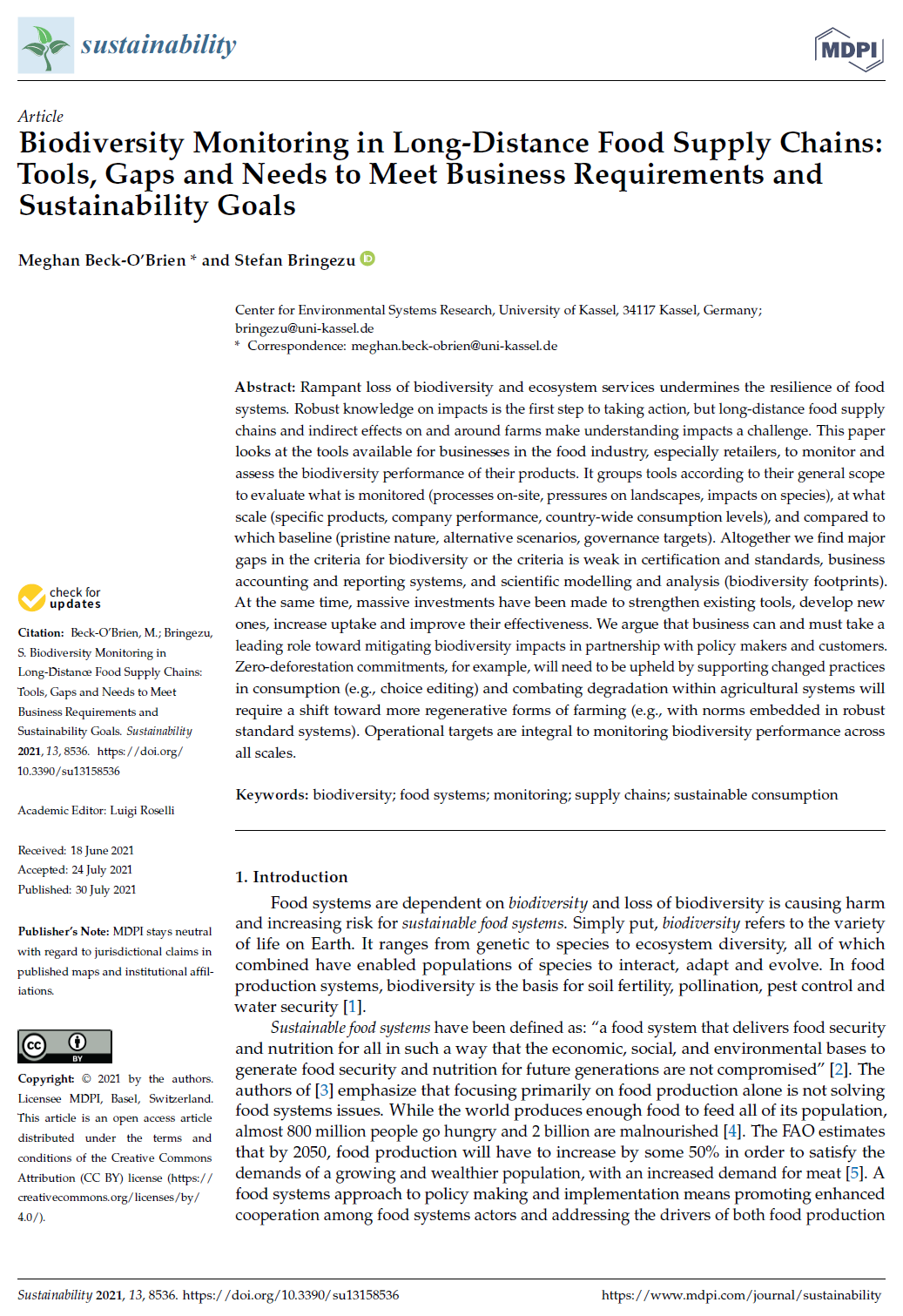Rampant loss of biodiversity and ecosystem services undermines the resilience of food systems. Robust knowledge on impacts is the first step to taking action, but long-distance food supply chains and indirect effects on and around farms make understanding impacts a challenge. This paper looks at the tools available for businesses in the food industry, especially retailers, to monitor and assess the biodiversity performance of their products. It groups tools according to their general scope to evaluate what is monitored (processes on-site, pressures on landscapes, impacts on species), at what scale (specific products, company performance, country-wide consumption levels), and compared to which baseline (pristine nature, alternative scenarios, governance targets). Altogether we find major gaps in the criteria for biodiversity or the criteria is weak in certification and standards, business accounting and reporting systems, and scientific modelling and analysis (biodiversity footprints). At the same time, massive investments have been made to strengthen existing tools, develop new ones, increase uptake and improve their effectiveness. We argue that business can and must take a leading role toward mitigating biodiversity impacts in partnership with policy makers and customers. Zero-deforestation commitments, for example, will need to be upheld by supporting changed practices in consumption (e.g., choice editing) and combating degradation within agricultural systems will require a shift toward more regenerative forms of farming (e.g., with norms embedded in robust standard systems). Operational targets are integral to monitoring biodiversity performance across all scales.


